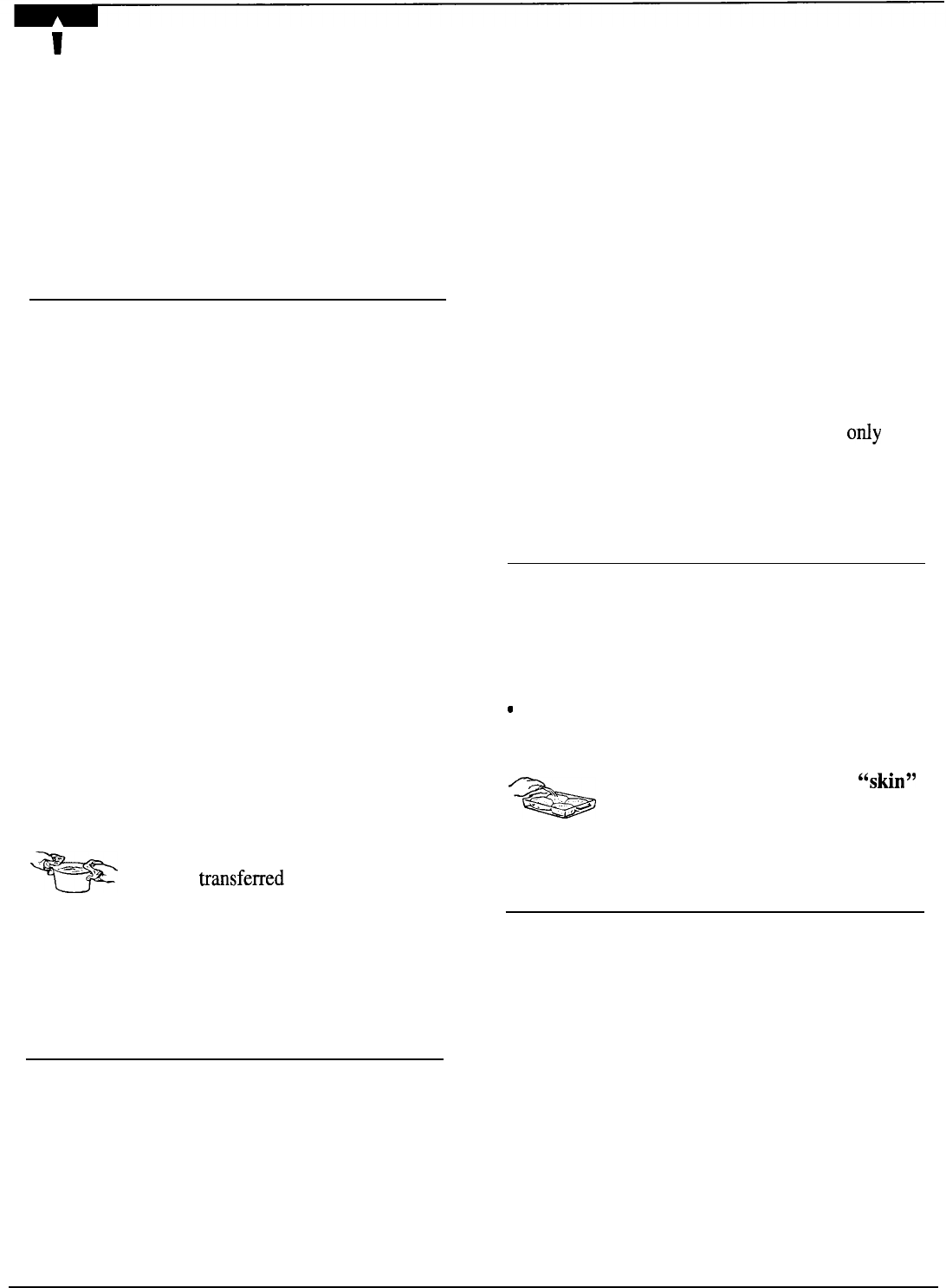
u
i
●
IMPORTANT SAFETY INSTRUCTIONS
(continued)
—Do not use the oven for storage purposes.
Do not leave paper products, cooking utensils
or food in the oven when not in use.
—If materials inside oven should ignite,
keep
oven door closed, turn oven off and disconnect
power cord, or shut off power at the fuse or
circuit breaker panel. If the door is opened, the
fire may spread.
●
Some
products such as whole eggs and sealed
containers-for example, closed jars-will
explode and should not be heated in this
microwave oven. Such use of the microwave
oven could result in injury.
●
Avoid heating baby food
in glass jars, even with
the lid off. Make sure all infant food is thoroughly
cooked. Stir food to distribute the heat evenly.
Be careful to prevent scalding when warming
formula or breast milk. The container may feel
cooler than the milk really is. Always test the
milk before feeding the baby.
●
Don’t defrost frozen beverages in narrow
necked bottles (especially carbonated beverages).
Even if the container is opened, pressure can build
up. This can cause the container to burst, possibly
resulting in injury.
●
Use foil only as directed in this guide.
TV dinners
maybe microwaved in foil trays less
than 3/4” high; remove the top foil cover and
return the tray to the box. When using foil in the
microwave oven,
keep the foil at least 1 inch
away from the sides of the oven.
35?=
●
Cookware may become hot
because
of heat
transfemed
from the heated
food. Pot holders may be needed to
handle the cookware.
●
Foods cooked in liquids
(such as pasta) may tend
to boil over more rapidly than foods containing
less moisture. Should this occur, refer to the Care
and Cleaning section(s) for instructions on how to
clean the inside of the oven.
● Thermometer-Do not use a thermometer in
food you are microwaving unless the thermometer
is designed or recommended for use in the
microwave oven.
4
●
Remove the temperature probe from the oven
when not using it to cook with.
If you leave the
probe inside the oven without inserting it in food
or liquid and turn on microwave energy, it can
create electrical arcing in the oven and damage
oven walls.
●
Plastic cookware-Plastic cookware designed
for microwave cooking is very useful, but should
be used carefully. Even microwave-safe plastic
may not be as tolerant of overcooking conditions
as are glass or ceramic materials and may soften
or char if subjected to short periods of
overcooking. In longer exposures to overcooking,
the food and cookware could ignite. For these
reasons: 1) Use microwave-safe plastics
only
and
use them in strict compliance with the cookware
manufacturer’s recommendations. 2) Do not
subject empty cookware to microwaving.
3) Do not permit children to use plastic cookware
without complete supervision.
●
When cooking pork,
follow the directions exactly
and always cook the meat to an internal temperature
of at least 170°F. This assures that, in the remote
possibility that trichina may be present in the meat,
it will be killed and meat will be safe to eat.
c
Do not boil eggs in a microwave oven.
Pressure will build up inside egg yolk and will
cause it to burst, possibly resulting in injury.
-
● Foods with unbroken outer
“skin”
such as potatoes, sausages, tomatoes,
apples, chicken livers and other
giblets, and egg yolks (see previous
caution) should be pierced to allow
steam to escape during cooking.
●
Not all plastic wrap is suitable for use in
microwave ovens.
Check the package for
proper use.
●
Spontaneous boiling-Under certain special
circumstances, liquids may start to boil during or
shortly after removal from the microwave oven. To
prevent bums from splashing liquid, we recommend
the following: before removing the container from
the oven, allow the container to stand in the oven
for 30 to 40 seconds after the oven has shut off.
Do not boil liquids in mrrow-necked containers
such as soft drink bottles, wine flasks and
especially narrow-necked coffee cups.
Even if the
container is opened, excessive steam can buildup
and cause it to burst or overflow.


















